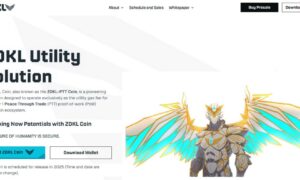The gaming industry has experienced a substantial surge of conventional AAA gaming developers making their entrance in blockchain technology in the past year with the likes of EA, Square Enix, and Ubisoft venturing into the realm of crypto and NFTs.
Each has offered a slightly different take on how they would utilize token technology but most have experienced a somewhat unexpected negative reaction, with the backlash from gamers centered around a perceived cash grab from gaming developers.
With a few notable exceptions, developers and publishers are now wary of approaches to adopt the latest fad as NFTs are controversial for a number of reasons. First is their perceived impact on the environment due to the energy-intensive process of securing blockchain networks and the tendency of NFT sellers to pump out mass-produced art and dump on retail investors.
Furthermore, the notion of selling digital art as a commodity, as well as its little-understood implications on ownership, have raised doubts about the relevance of NFTs to gaming. The infiltration of non-fungible tokens into video games has inflamed a long-running dispute in cryptocurrency and gaming communities.
These developments, however, should not overlook the disruptive potential of NFTs through the creation of new industry standards for ownership and how that will affect the future of gaming where gamers seek to be empowered with more proactive roles.
The Importance of NFTs in Gaming
Similar to how NFTs have been used in digital art to represent and transfer the ownership of unique art pieces, they are also a natural fit for gaming since they can be tied to unique in-game goods such as clothing or weapons.
In instances where gamers have denounced NFTs, games have issued NFTs to represent exclusive skins or rare items that can only be acquired through purchase – not dissimilar to the lootbox concept that continues to draw the ire of gamers in that they are merely a new means of extracting more money from users. A more useful implementation of NFTs would allow players to retain true ownership of their digital items, letting them freely use, sell or trade them to others, even across games and platforms, without being constrained by the restrictions of particular app stores or games publishers.
As NFTs are stored on the blockchain, all participants obtain the “right to transfer” the digital valuables to which they gain access. On the other hand, traditional in-game items purchased via in-game markets can only retain their worth for as long as the item is in demand, and only for as long as the platforms maintaining the markets exist.
NFTs have also found success in integrating economic models in games that have experimented with token structures in-game, allowing players to participate in the revenue generation process that, up to then, has only seen game developers earn revenue. The so-called “play-to-earn” concept compensates players for the time they spend earning in-game tokens. Though immature and fraught with shortcomings in sustainability, the possibility of converting in-game awards into real money via NFTs is, nonetheless, an innovative step in gaming.
All of this demonstrates how NFTs can transform traditional gaming, bringing it into a more utility-driven landscape that can greatly benefit and empower gamers.
Shaping the Future of Gaming with Blockchain
As new technology trends are integrated, blockchain gaming continues to firm up as a viable method of securely transferring value and digital assets, while bridging the gamer economy across different titles and platforms.
Blockchain technology can help solve long-standing challenges in the gaming sector. If traditional games faced dead ends when developers went bust or retired games and in-house marketplaces, decentralized applications (Dapps) can utilize transparency, immutability, and security features to help authenticate, verify and maintain transactions between users, ensuring perpetuity for their hard-earned items and game currencies.
Beyond that, there are other challenges in gameplay that blockchain technology could provide a solution for. One example is the increasingly popular metaverse concept, which involves virtual open worlds in which games still struggle with simulating real-world time and physics. While perpetual worlds are possible, they are still unable to replicate the passage of time in a stable and realistic way.
Upcoming blockchain game Cradles: Origin of Species is one such project attempting to innovate gameplay in this manner. Aiming to be not only the world’s first 3A MMORPG using blockchain technology to facilitate game props trading, Cradles is also developing a new token protocol called EIP3664 that will enable “entropy-increasing” virtual worlds, introducing for the first time characters, items, and elements that deteriorate or age with the passing of time to create a truly realistic metaverse.
With new game mechanics and an epic game experience, Cradles is debuting in the market with its No Fishing mini-game to demonstrate the enhanced utility of its new NFT technology. Unlike traditional NFTs that are static and non-modular, the new type of EIP3664 NFT will allow combinable component NFTs. This means that players will be able to freely combine or take apart in-game items and characters to create limitless combinations of new NFTs.
No Fishing is designed as the gateway to Cradles, with all the mini-game components to be fully merged into the Cradles main title later on.
Bringing NFTs and Gamers Together
The NFT craze that started with a meteoric rise to adoption and that is currently battling negative sentiment should not obscure the potential of blockchain as a foundational technology for the future of gaming.
NFTs have shown promise as a means of implementing ownership aspects and monetization, but there are also tangible gameplay innovations to consider. Not least the empowerment of gamers through decentralized models that can dampen the restrictions of centralized exploitation with traditional gaming.
































